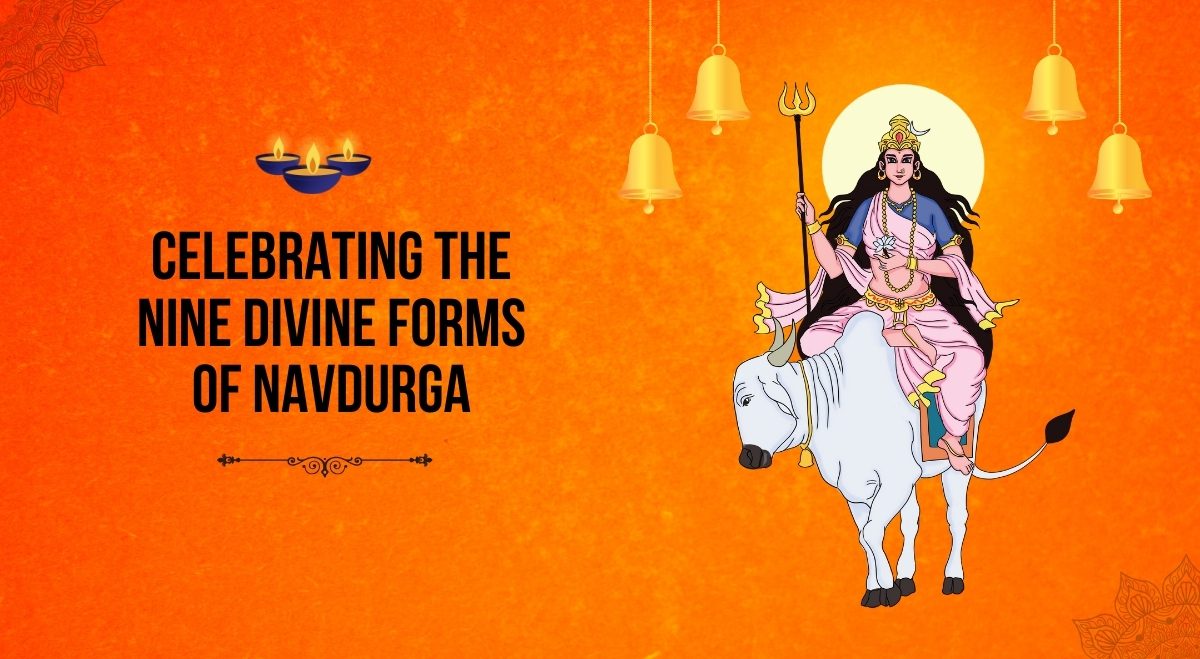Navratri, meaning “nine nights” in Sanskrit, is one of India’s most significant and widely celebrated Hindu festivals. This auspicious occasion honors the nine manifestations of Goddess Durga, the divine feminine power. Each day of Navratri is dedicated to a different form of the goddess, with unique rituals, colors, and offerings associated with each avatar.
Day 1: Shailaputri
Shailaputri, the daughter of the mountains, is worshipped on the first day of Navratri. She represents the power of Brahma, Vishnu, and Shiva. Depicted riding a bull and holding a trident and lotus, Shailaputri embodies purity and immense strength. Devotees wear red on this day and offer jaggery to the goddess.
Day 2: Brahmacharini
The second form of Durga is Brahmacharini, which symbolizes love, loyalty, and devotion. She is portrayed walking barefoot, holding a Japa mala and kamandalu. Brahmacharini represents the austere phase of Goddess Parvati when she performed penance to win Lord Shiva’s heart. Devotees wear blue and offer sugar to seek her blessings for a harmonious married life.
Day 3: Chandraghanta
Chandraghanta, worshipped on the third day, is known for her peaceful yet fierce nature. She wears a crescent moon on her forehead and is depicted with ten arms holding various weapons. Devotees wear yellow and offer milk or kheer to invoke her blessings for courage and strength.
Day 4: Kushmanda
The fourth day is dedicated to Kushmanda, believed to be the creator of the universe. Her name derives from “Ku” (little), “ushma” (warmth), and “anda” (egg), signifying the cosmic egg from which the universe emerged. Devotees wear green and offer malpua to seek her blessings for good health and vitality.
Day 5: Skandamata
Skandamata, the mother of Skanda (Kartikeya), is worshipped on the fifth day. She is depicted holding baby Skanda in her lap while riding a lion. Devotees wear grey and offer bananas to the goddess, seeking her blessings for wisdom and prosperity.
Day 6: Katyayani
The sixth form of Durga is Katyayani, born to sage Katyayan. She is considered one of the most violent forms of Goddess Durga, embodying immense courage. Devotees wear orange and offer honey to invoke her blessings for victory over evil forces.
Day 7: Kalaratri
Kalaratri, the fiercest form of Durga, is worshipped on the seventh day. She represents the destroyer of ignorance and darkness with a dark complexion and riding a donkey. Devotees wear white and offer jaggery to seek her protection against negative energies.
Day 8: Mahagauri
The eighth day is dedicated to Mahagauri, who symbolizes intelligence, peace, and prosperity. Depicted as fair and beautiful, riding a white elephant, she represents purity and tranquility. Devotees wear pink and offer coconut to seek her blessings for a pure heart and mind.
Day 9: Siddhidatri
The final day of Navratri is devoted to Siddhidatri, the bestower of supernatural powers. She is believed to possess and bestow all types of siddhis (supernatural powers). Devotees wear sky blue and offer sesame seeds to seek her blessings for the fulfilment of all desires.
While traditional Navratri celebrations involve elaborate rituals and fasting, modern devotees can adapt these practices to fit their busy lifestyles:
- Set up a small altar at home with an image or idol of Goddess Durga.
- Dedicate a few minutes each day to meditation or prayer.
- Wear the color associated with each day, even if it’s just an accessory.
- Prepare simple prasad (offerings) using fruits or sweets.
- Listen to devotional music or chants during your commute.
- Practice mindful eating or partial fasting if full fasting is not feasible.
- Participate in community celebrations during weekends.
Navratri is more than just a festival; it’s a spiritual journey that allows devotees to connect with different aspects of the divine feminine energy. Each day presents an opportunity for self-reflection and personal growth. As you progress through the nine days, consider how each form of the goddess relates to your life:
- Shailaputri teaches us to stay grounded and strong.
- Brahmacharini reminds us of the power of devotion and discipline.
- Chandraghanta encourages us to face our fears with courage.
- Kushmanda inspires us to tap into our creative potential.
- Skandamata emphasizes the importance of nurturing relationships.
- Katyayani motivates us to stand up against injustice.
- Kalaratri helps us confront and overcome our inner darkness.
- Mahagauri guides us towards purity of thought and action.
- Siddhidatri empowers us to realize our full potential.
By contemplating these aspects, we can become more balanced and spiritually evolved individuals.
Navratri is a time of joy, devotion, and spiritual growth. Whether you’re a devout follower or simply curious about Hindu traditions, this festival offers a unique opportunity to explore the many facets of the divine feminine. As you celebrate each day, remember that the true essence of Navratri lies in awakening the divine qualities within yourself.

